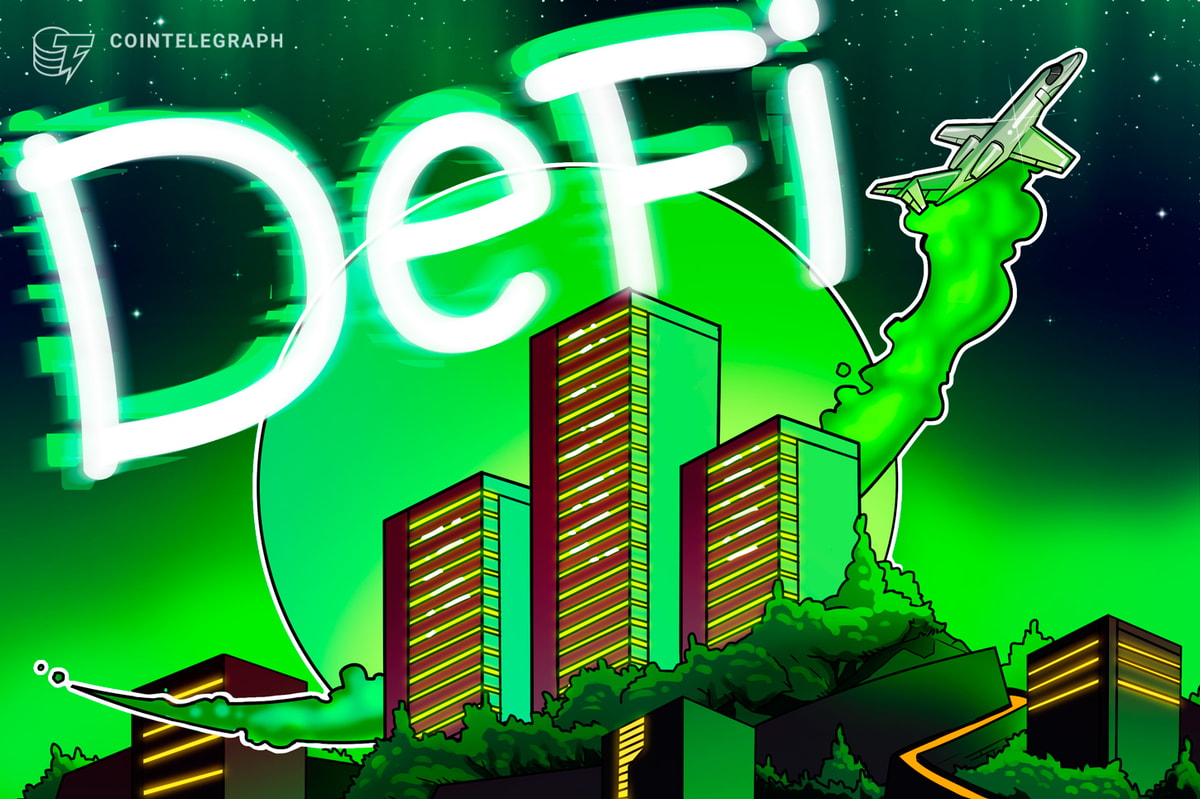
Bitcoin, in its nine years of existence, has steadily gained traction, defining itself as a new digital gold. Early adopters of this technology have shown excitement for the potential of this inflation-proof sound money. With steady increase in value over the years, this new invention of money has established its position in finance. The gold rush pushed by the price explosion reached its peak at the end of 2017. Halfway into this year, bitcoin has moved into a bear market. As the price plunged, followed by exchange hacks and speculators leaving the space, the rally quieted down. Now that the fever has cooled off, a narrative that runs quietly behind the scenes can begin to emerge.
For many veteran crypto enthusiasts, Nick Szabo’s paper “Shelling Out: The Origins of Money” has become a guide for a rite of passage deep into the world of Bitcoin. In this essay published in 2002, Szabo, a legal scholar and cryptographer who invented bit gold, shared his odyssey of discovering the roots of money in the ancient past. Building on the insights of evolutionary biologist Richard Dawkins, who saw money as a “formal token of delayed reciprocal altruism,” Szabo found in the precursor of money the beginning stage of developing tools for cooperation.
This astute scholar of money learned how these primitive forms of money, among other functions such as inheritance and insurance against starvation, gave humans a mechanism to deal with conditions in a much more civil way, at a time when hostility and distrust among tribes were strong. He noted how wealth transfer was used to carry obligation and rights, and enforce contracts such as for purchasing mates and for entering another band’s territory to hunt and gather goods, as well as a way to dispute resolution and mitigate wars and cycles of revenge.
Wisdom of Peacemakers
At its origin, money played a role in tracking favors and as an enforcer of reciprocation. It performed as a vehicle to civilize our beast-like nature, taming and guiding it to carry cooperative and social behaviors. This step toward civilization was taken by Native people in the continent of North America. Indigenous peoples used wampum to derive value and as a medium of exchange, utilizing it to facilitate civil activities.
For the Iroquois, the idea of money as a tool for delayed reciprocal altruism was embodied in the wisdom of a peacemaker who came at a time of great turmoil for the Indian nations. When a civil war broke out and five nations were fighting, causing death and destruction, the legendary peacemaker named Deganawidah urged them to unite together to become stronger.
In a paper that explored the Iroquois nations’ influence on the formation of the United States government, Jo Olson indicated how the peacemaker taught people that in order to “guarantee peace among themselves they needed to learn to solve disputes through discussion rather than violence.”
Using this nonviolent principle to resolve conflicts, the Iroquois made the Great Law of Peace, a model of governance based on a rule of consensus. At its heart was a decentralized decision-making process, with the emblem of free speech and liberty, in which everyone is given equal freedom to voice their opinions and no one should be forced to do things against their will.
Olson characterized the wampum belt as a “beaded system of coded information employed in reciting the Great Law” and described how it was used to settle disputes, resolve affairs between different tribes and conduct diplomatic business. For the First Nations, wampum functioned as a store of value that preserved the code of this peaceful conduct and as a settlement that used wealth transfer as a substitution for punishment to nonviolently enforce this rule.
Modern Centralized Money
Early European settlers in the New World learned to use wampum to conduct diplomatic business with the Iroquois. Over time, the invention of coinage led to a change of landscape, and modernity slowly began to reshape the natural world. As the Turtle Island disappeared, so did the shells that were used to carry precious coded information of the Great Law of Peace.
Through industrialization and mechanization of society, a white civilization diverged its course from the path laid out by its forebears. The constitutional republic of the United States that placed decision-making processes on majority voting uprooted the system from its foundation of the Iroquois democratic consensus. While the First Nations stood firmly on the principle of decentralization, European descendants favored a representative form of governance, with its elected officials and systems of checks and balances. The top-down hierarchical system that was developed created a security hole where selfishness could go unchecked and alter the underlying rules of reciprocal altruism that aimed to overcome challenges that kept humans from cooperating.
Modern money became fiat currency (declared to be legal tender by the government), and it became privatized. Money that has been centralized has become a medium of censorship and financial exploitation. As savagery and violence broke out, with U.S. invasions and military occupations feeding extractive crony capitalism, the will to end the cycle of destruction emerged in cyberspace. They are the cypherpunks, a group that advocates social and political change with the use of strong cryptography. They write code to restore the rules of law in society.
A gift of nature that allowed our predecessors to create a wampum belt was not strong enough to withstand violence and codify the Iroquois laws. Now, the imagination of computer science offers a way to replicate this magical property of money designed to carry the code of reciprocal altruism much more securely.
Planting the Seeds for Peace
Paul Wallace, in his bookWhite Roots of Peace: Iroquois Book of Life, noted how the peacemaker Deganawidah planted the Great Tree of Peace, hoping that “its roots shall extend to far places of the earth so that all mankind may have the shelter of the Great Law.” This tree signified their constitution, and its roots deep in the earth extending into all directions expressed the contract of their union.
In the post-industrial era of computing, the seed for peace was rediscovered. The creator of Bitcoin engineeringly rewired a pathway back to nature, planting the tree of peace in the digital space. Szabo, a pioneer of cryptocurrency and smart contracts, explained how cryptocurrency is backed by cryptography and how its integrity is protected by a structure called a Merkle tree. Szabo pointed out, “Combined with a proper replication and chains of transaction blocks protected by proof-of-work, Merkle trees can make data such as transactions post-unforgeable by consensus.”
Just like the Iroquois, who with their distrust toward rulers held a view that hierarchies wither the tree of peace, Bitcoin developers adhere to the concept of decentralization to create a secure foundation. In his bookMastering Bitcoin, author and security expert Andreas M. Antonopoulos described that the architecture of traditional security is developed “around the root of trust as a series of concentric circles, like layers in an onion, extending trust outward from the center.” In Bitcoin, he explained, “the consensus system creates a trusted public ledger that is completely decentralized.” By distributing the task of validation across multiple computers, Bitcoin minimizes a need to trust third parties and places the roots of the tree firmly in the ground.
Olson showed how the Iroquois nations’ Tree of Peace provided protection with its branches and that “above the tree soared the eagle” whose “duty was to be the lookout for enemies who might disturb the peace.” Bitcoin’s consensus algorithm, with its genius of incentive structures, commands computers around the world to soar high in an abstract math competition. Scavenging birds of prey in predatory capitalism are transformed into brave eagles, with self-interest-driven miners that hunt for rewards being incentivized to follow rules and play honestly to generate network security.
Keeping the Promise
Founders of the Iroquois Confederacy brought the Law of Peace, a way to settle disputes through consensus. Wallace noted, “The Five Nations had shown that a disposition to peace need not breed softness, and that Peace armed with Power and guided by Reason is irresistible.” He pointed out that “to the Iroquois, peace was the law” and that “they used the same word for both.” In their vision, this law didn’t just apply to their own interrelated groups within a larger tribe. It encouraged each individual to treat all people on earth with kindness.
This rule of consensus lies at the foundation of European enlightenment ideals. Scholars have recognized the Iroquois nations’ influence on the formation of the United States government. The principle of equality and liberty for all people in the Declaration of Independence was a promise, and the constitution was meant to be its fulfillment.
While the Iroquois nations’ Tree of Peace could not scale beyond circles of tribes, cypherpunks now carry on the efforts of these pioneers of civilization, with the knowledge of computer science. By working to unite people under the Tree of the Universal Law of Peace, this network strives to keep the promise of peacemakers. Built one block at a time, the Tree of Peace that was a symbol of humanity has begun to grow again. Bitcoin, by maintaining its integrity as a settlement, with innovation on a second layer such as the Lightning Network, makes independent and seamless transactions scalable at a global level.
In this interconnected world where opportunities to meet people exist far beyond what our ancestors could have ever imagined, the message of peace is relayed with lightning speed. The internet of money transcending borders protects people of all nations from currency wars and tyranny of governments. The branches that stretch out to the world now extend the contract of reciprocal altruism — which was once exchanged among kin and neighbors in small villages — even to strangers who don’t look alike or speak the same language.
In this age of the internet, Bitcoin carries on the heritage of mankind, building its noble architecture upon the origin of money. What is stored in this new digital gold is the wisdom of peacemakers that once inspired our forebears to put an end to humanity’s destructive past. Leaving behind the old rule of the jungle — of “an eye for an eye and a tooth for a tooth” — a new civilization can begin, to be led by the Golden Rule of “do unto others as you would have them do unto you.” Enshrined in this piece of mathematics, through the united hands of the past and present, the Great Law of Peace can now find its fulfillment.










